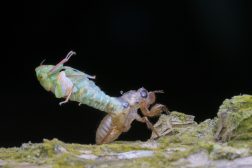Definition
noun
A taxonomic class in Phylum Amoebozoa characterized by the absence of mitochondria
Supplement
Archamoeba species belong to the Phylum Amoebozoa. The phylum includes protists often possessing pseudopods, which may be blunt, fingerlike, lobose, etc., and the cell’s cytoplasm being divided into endoplasm and ectoplasm. The endoplasm is a granular central mass whereas the ectoplasm is the clear, outer part of the cytoplasm. Most species of this phylum lack flagella. However, flagella do exist in most Archamoebae species, e.g. the giant amoeba Pelomyxa sp.. Apart from having flagella, the Archamoebae are distinguished by the lack of mitochondria.1 Because of this feature, the Archamoeba group is regarded as primitive. As such, the Greek arkhi- (meaning to begin) depicts the presumed antiquity of this group.
The Class Archamoeba includes the genera, Entamoeba, Endolimax, Mastigamoeba, Mastigella, Mastigina, Pelomyxa, and Phreatamoeba. Entamoeba histolytica is an important representative of this group since it is a human pathogen, causing amoebic dysentery (bloody diarrhea). Endolimax species are also found as parasites in the intestines of various animals. Endolimax nana, for instance, is a parasite living in the intestine of a human host.
Scientific classification:
- Domain: Eukaryota
- Phylum: Amoebozoa
- Class: Archamoebae
See also:
Reference(s):
1 Cavalier-Smith T (1991). “Archamoebae: the ancestral eukaryotes?”. BioSystems 25 (1-2): 25–38.







